This one ingredient buckwheat bread is completely gluten-free, yeast-free, and flourless! Discover how to make buckwheat bread effortlessly using a natural fermentation process.
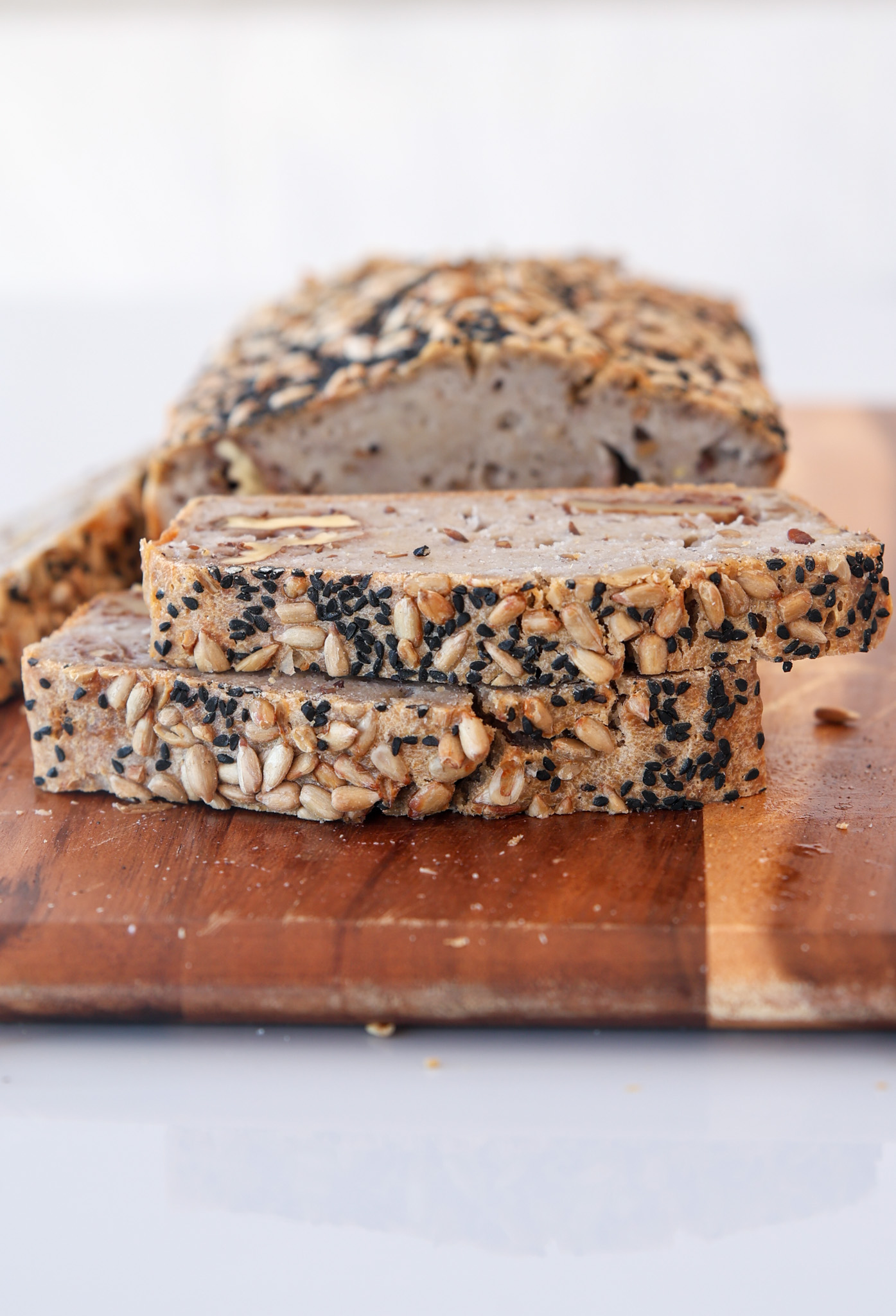
I love experimenting with unique gluten-free bread recipes. A few months ago, I made a delicious tahini bread, which I highly recommend trying. But today, I’m excited to share this easy buckwheat bread recipe, which truly surprised me with the results!
Why You’ll Love This Recipe
Only One Ingredient – This no yeast bread is made with just buckwheat groats and water!
Naturally Fermented – The bread develops a slightly tangy taste and a great texture from the fermentation process.
Gluten Free & Dairy Free – A perfect option for those avoiding gluten, flour, or dairy.
Flourless & Yeast Free – No need for flour, yeast, or any additives.
Easy to Make – Minimal effort, just soak, blend, ferment, and bake!
Versatile – You can customize this bread with mix-ins and toppings like nuts, seeds, and spices.
Ingredient Notes
This glutenfree buckwheat bread is truly magical because it requires only one ingredient: buckwheat groats.
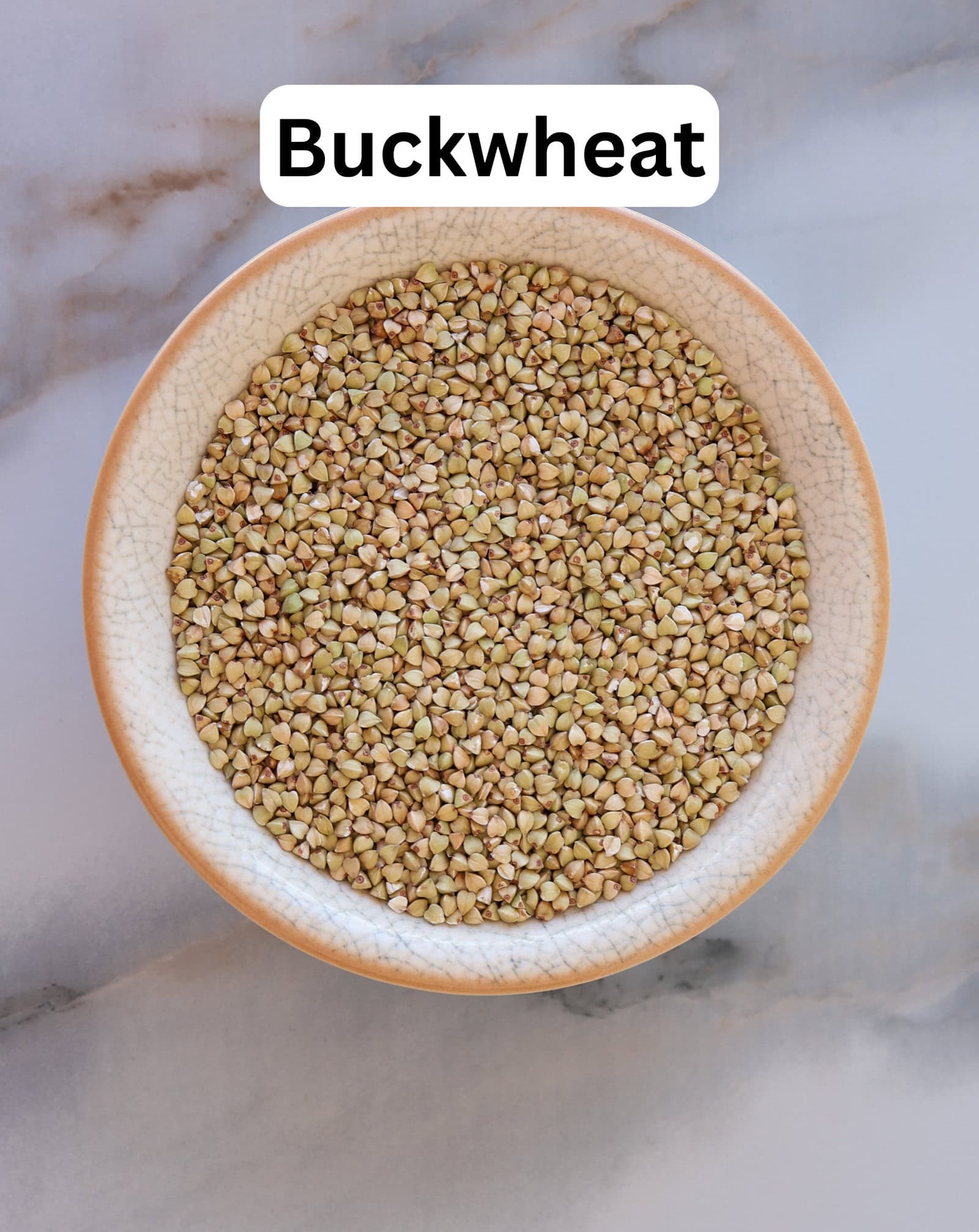
What is Buckwheat?
- Buckwheat groats are not wheat—they are actually a seed, making this bread naturally gluten free.
- It has a mild, nutty flavor and is rich in fiber, protein, and essential minerals.
- For this recipe, use hulled, raw buckwheat groats (not toasted kasha) to ensure proper fermentation.
How It Works – The Science Behind Buckwheat Bread
You might wonder: How is it possible to make bread without flour, yeast, or eggs? The answer is fermentation!
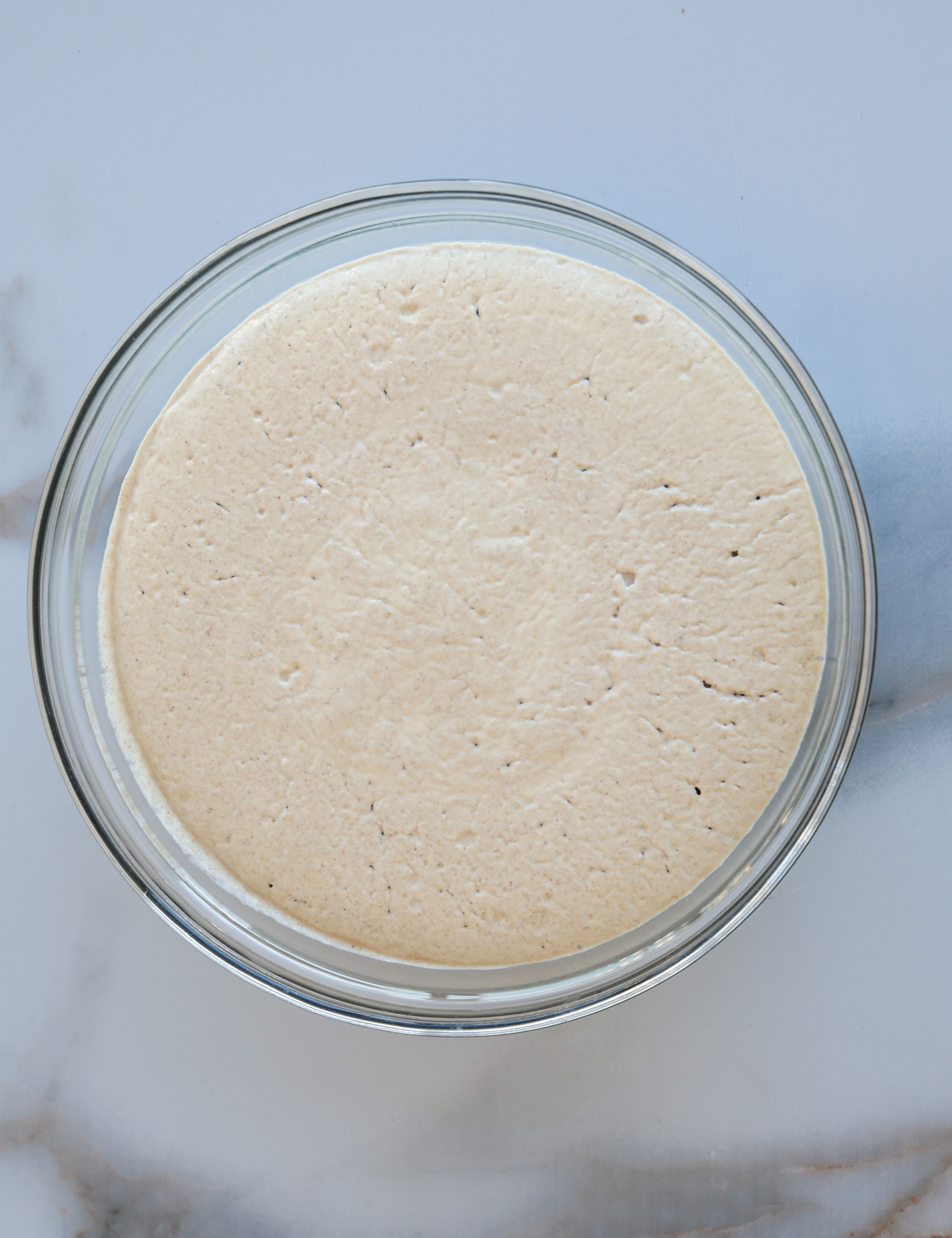
Here’s how this process works:
- Soaking – Softens the buckwheat and starts natural enzyme activity.
- Blending – Creates a thick batter similar to pancake batter.
- Fermentation – The batter sits for 24–36 hours, developing natural bubbles and a slight tangy aroma.
- Baking – The fermented batter bakes into a moist, airy, and nutritious buckwheat loaf.
This fermentation process is completely natural and makes the bread easier to digest while giving it an incredible texture.
Mix-ins and Toppings – Make It Your Own!
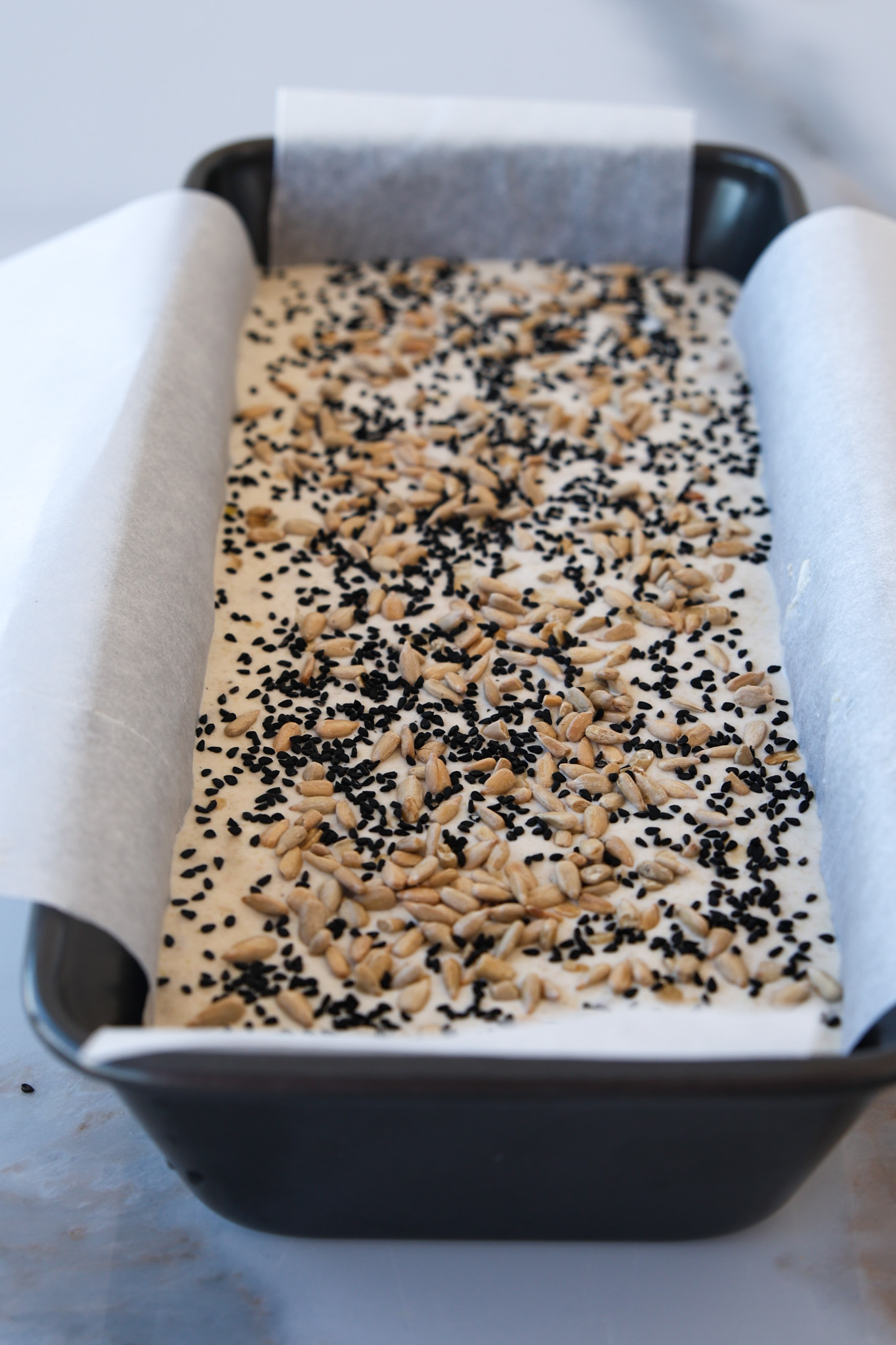
One of the best things about this fermented buckwheat bread is how versatile it is. You can customize it with various mix-ins and toppings!
What I Used
- Mix-ins: Salt, olive oil, walnuts, sunflower seeds, flaxseeds.
- Toppings: Nigella seeds, sunflower seeds.
More Options to Try
Mix-ins: Sesame seeds, pumpkin seeds, poppy seeds, pecans, cashews, maple syrup, honey, or cinnamon.
Toppings: Chia seeds, flaxseeds, black sesame seeds, sliced almonds, or oats.
Get creative and make this gluten-free buckwheat loaf your own!
Tips and Tricks to Make Gluten-Free Buckwheat Bread
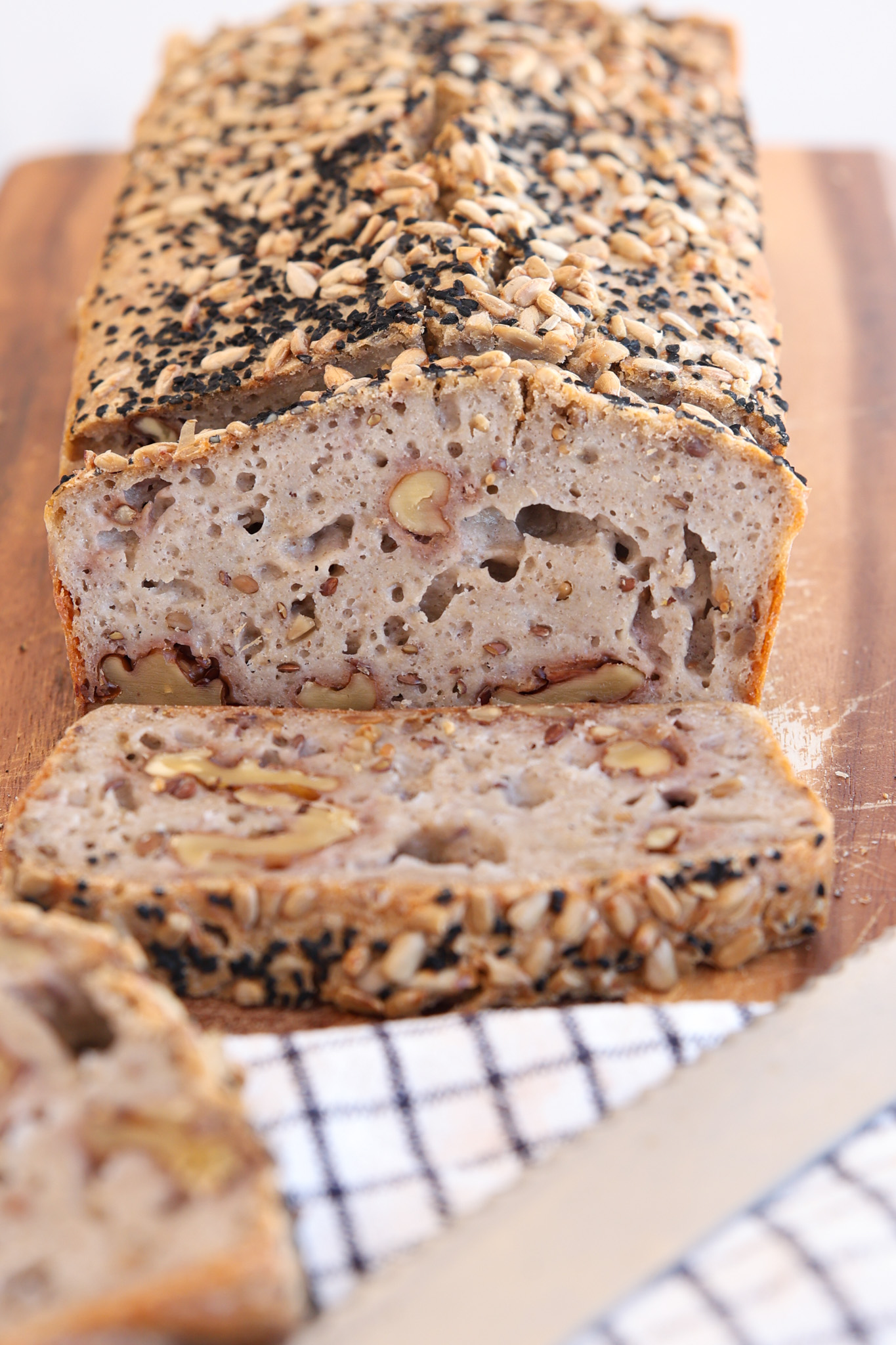
Use raw, hulled buckwheat groats – Avoid toasted (kasha) or unhulled buckwheat, as they won’t ferment properly.
Fermentation time matters – Let the batter sit for 24–36 hours until you see bubbles and a tangy aroma.
Avoid rinsing after soaking – The sticky liquid helps with fermentation and creates the right texture.
Use a non-metal bowl – Fermentation works best in glass or ceramic containers.
Adjust the water as needed – The batter should be pancake batter consistency; if too thick, add a few tablespoons of water.
Baking soda for extra rise – Add ½ teaspoon of baking soda before baking for a slightly lighter texture.
How to Store Buckwheat Bread
- Room Temperature – Store in an airtight container for 1–2 days.
- Refrigerator – Keeps fresh for up to 5 days in a sealed container.
- Freezer – Slice and freeze for up to 3 months. Reheat in the oven or toaster before serving.
Video Recipe 📹
Watch the full video recipe to learn how to make the buckwheat bread.
Prefer the written recipe? Scroll down to the recipe box 👇
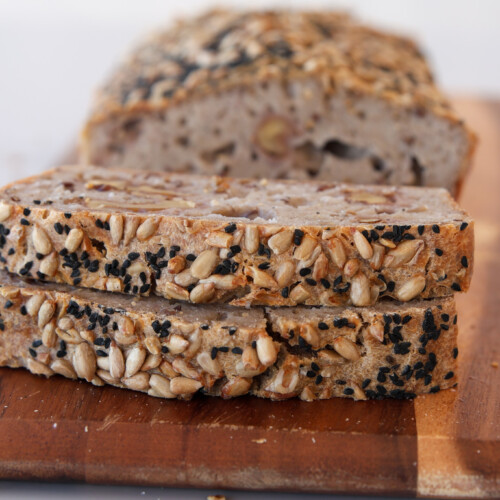
Easy Buckwheat Bread
This 1 ingredient buckwheat bread is naturally gluten-free, yeast-free, and flourless! Learn how to make buckwheat bread with a simple fermentation method.
Prevent your screen from going dark
For the bread:
- 2¾ cups (500 g) Buckwheat groats Use hulled, raw buckwheat kernels/groats for this recipe to work, do not use toasted buckwheat groats (read notes)
- 1 cup (240) Water
- 1 teaspoon Salt
For the add-ins (optional):
- 1 tablespoon Olive oil optional
- ¼ cup Walnuts optional
- 2 tablespoons sunflower seeds optional
- 2 tablespoons Flaxseeds optional
For the topping:
- Nigella seeds
- Sunflower seeds
- read recipe notes for other topping ideas
- Always use raw, hulled buckwheat groats—not toasted (kasha) or unhulled buckwheat, as these won’t ferment properly.
- Proper Fermentation is Key: The batter needs to sit for 24–36 hours at room temperature (22–26°C / 72–78°F). Look for small bubbles forming on the surface and a slightly tangy aroma—these indicate successful fermentation.
- Adjust Water for the Right Batter Consistency: The blended batter should be similar to pancake batter—not too thick or too runny. If it’s too thick after blending, add 1–2 tablespoons of water at a time.
- Mix-ins: Customize Your Loaf For extra flavor and texture, add ingredients like chopped walnuts, sunflower seeds, flaxseeds, sesame seeds, or pumpkin seeds. For a subtle sweetness, you can add 1–2 teaspoons of maple syrup or honey. Sprinkle Nigella seeds, poppy seeds, or more sunflower seeds on top before baking for a decorative crust.
- Toppings: same for topping, Customize the topping to your preference. You can top your bread with: flaxseeds, pumpkin seeds, nigella seeds, sesame seeds, chopped nuts and more.
- Baking Soda for Extra Rise (Optional): If you prefer a slightly lighter loaf, add ½ teaspoon of baking soda right before baking—it reacts with the natural acidity from fermentation for a better rise.
Calories: 135kcalCarbohydrates: 23gProtein: 5gFat: 4gSaturated Fat: 0.5gPolyunsaturated Fat: 2gMonounsaturated Fat: 1gSodium: 165mgPotassium: 172mgFiber: 4gSugar: 0.1gVitamin A: 3IUVitamin C: 0.1mgCalcium: 13mgIron: 1mg
Nutrition information is automatically generated and thus we can not guarantee it is 100% accurate.Frequently Asked Questions
No, you must use raw, hulled buckwheat groats. Toasted buckwheat (kasha) will not ferment properly, resulting in a different texture and flavor.
This bread does not require yeast and naturally has a dense, moist texture. However, if you prefer a lighter loaf, you can add ½ teaspoon of baking soda before baking to improve the rise.
Since this is a yeast-free, gluten-free, flourless bread, it has a naturally dense and moist texture. To make it slightly lighter, ensure proper fermentation and consider adding ½ teaspoon of baking soda to help with aeration.
Source link
